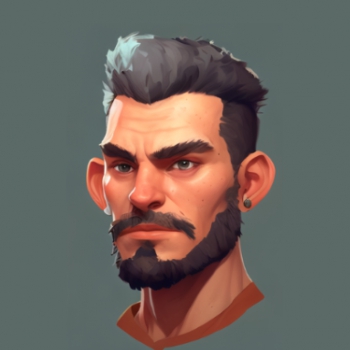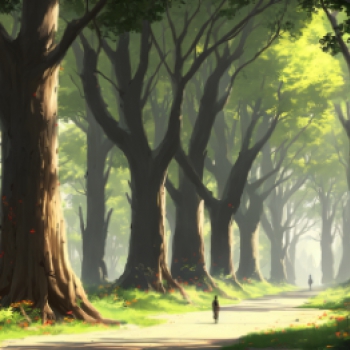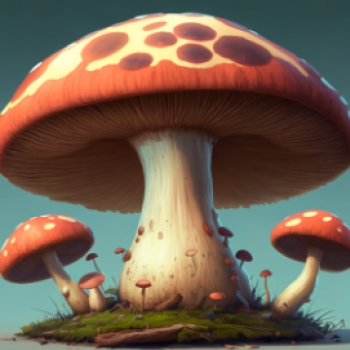帮忙翻译一段英语
-
Plant material and culture conditions have been described (7). Briefly, a diploid tissue culture line, WOO1C, of wild carrot, Daucus carota L., was maintained in Murashige and Skoog medium supplemented with 0.1 mg of 2,4-dichlorophenoxy... Plant material and culture conditions have been described (7). Briefly, a diploid tissue culture line, WOO1C, of wild carrot, Daucus carota L., was maintained in Murashige and Skoog medium supplemented with 0.1 mg of 2,4-dichlorophenoxyacetic acid (2,4-D). To regenerate plants from the culture, callus tissue was transferred to the same medium devoid of 2,4-D (embryogenic medium). All experiments were performed with cultures grown in liquid medium. For convenience, cultures grown in 2,4-D-containing medium are referred to as "callus cultures", and those grown in medium without 2,4-D as "embryo cultures." The growth of callus cultures was measured by the sidearmturbidity method (7). The number of cells at any time point of growth was estimated from turbidity in a Klett-Summerson calorimeter and was expressed in arbitrary units. For example, Klett 100 corresponds to ="2 X 106 cells per ml. The relationship is linear up to Klett 150 in our Klett-Summerson colorimeter. Suspension cultures ofWOOLC cell line are normally maintained at cell densities between 106 and 107 cells per ml in 0.1 mg of 2,4-D per liter (high-density culture) in shake flasks. During a quantitative study on embryogenesis, we found that maximal embryo production can be achieved by first incubating the culture at high density in medium without 2,4-D for one generation time and then diluting it to 2-3 x 104 cells per ml (low-density culture). To compare cultures of comparable density, callus cultures and embryo cultures were subjected to the same procedure. To initiate low-density embryo or callus cultures, an 8-day-old high-density culture grown at the logarithmic phase was washed three times with fresh callus or embryogenic medium and resuspended at 8 x 105 cells per ml for one generation (3 days) in its corresponding medium. It was then diluted to 2 x 104 cells per ml; 20 ml of the culture was incubated in a plastic Petri dish (9 cm in diameter) at 240C. The morphogenetic events of the cultures were examined and photographed under a dissecting microscope. 请不要用google的那个,我看不懂~~ 展开
全部评论(2条)
-

- fsq9264543 2008-03-02 00:00:00
- quite professional
-
 赞(5)
赞(5) 回复(0)
回复(0)
-

- 新北方极地1 2008-02-20 00:00:00
- 植物材料与文化 条件已被描述( 7 ) 。简单来说,二倍体组织 文化线, woo1c ,野生萝卜,胡萝卜,是 保持murashige和skoog培养基 用0.1毫克的2,4 -二氯苯氧乙酸( 2,4 -四) 。再生 植物从文化,愈伤组织被移送 到同一个中等空洞2,4三维(胚中等) 。 所有实验均与文化成长在液体 中等。为方便起见,文化的成长,在2,4三维含 中等称为"愈伤组织培养" ,而那些成长 在培养基2,4三维"胚胎文化" 。 生长愈伤组织培养,是衡量该sidearmturbidity 法( 7 ) 。细胞数量在任何时间点 增长估计从浊度在klett -萨默森 热量表,并有人表示,在任意单位。举例来说, klett 100对应= " 2 × 106细胞每毫升。关系 是直线上升,以klett 150我们klett -萨默森色。 悬浮培养ofwoolc细胞系通常保持 在细胞密度之间的106和107细胞每毫升0.1 毫克的2,4三维每公升(高密度文化) ,在摇瓶。 在定量研究胚胎发生后,我们发现 Z大的胚胎生产,可以取得diyi孵化 文化,在高密度的媒体2,4三维1 一代人的时间,然后再稀释至2-3 x 104个细胞中每毫升 (低密度文化) 。比较文化比较的密度, 愈伤组织培养及胚胎文化遭到了 同样的程序。发起低密度胚或愈伤组织培养, 为期8天的岁高密度培养的速度增长,对数 diyi阶段被冲至3倍,与新鲜愈伤组织或胚 中型及悬浮于8 × 105个细胞每毫升1 一代人( 3天)在其相应的媒介。当时 稀释至2 × 104个细胞,每毫升, 20毫升的文化孵育 在一个塑料皮氏培养皿( 9公分) ,在240c 。该 形态发生的事件,其文化的人进行检查和拍照 根据解剖显微镜
-
 赞(5)
赞(5) 回复(0)
回复(0)
热门问答
- 帮忙翻译一段英语
- Plant material and culture conditions have been described (7). Briefly, a diploid tissue culture line, WOO1C, of wild carrot, Daucus carota L., was maintained in Murashige and Skoog medium supplemented with 0.1 mg of 2,4-dichlorophenoxy... Plant material and culture conditions have been described (7). Briefly, a diploid tissue culture line, WOO1C, of wild carrot, Daucus carota L., was maintained in Murashige and Skoog medium supplemented with 0.1 mg of 2,4-dichlorophenoxyacetic acid (2,4-D). To regenerate plants from the culture, callus tissue was transferred to the same medium devoid of 2,4-D (embryogenic medium). All experiments were performed with cultures grown in liquid medium. For convenience, cultures grown in 2,4-D-containing medium are referred to as "callus cultures", and those grown in medium without 2,4-D as "embryo cultures." The growth of callus cultures was measured by the sidearmturbidity method (7). The number of cells at any time point of growth was estimated from turbidity in a Klett-Summerson calorimeter and was expressed in arbitrary units. For example, Klett 100 corresponds to ="2 X 106 cells per ml. The relationship is linear up to Klett 150 in our Klett-Summerson colorimeter. Suspension cultures ofWOOLC cell line are normally maintained at cell densities between 106 and 107 cells per ml in 0.1 mg of 2,4-D per liter (high-density culture) in shake flasks. During a quantitative study on embryogenesis, we found that maximal embryo production can be achieved by first incubating the culture at high density in medium without 2,4-D for one generation time and then diluting it to 2-3 x 104 cells per ml (low-density culture). To compare cultures of comparable density, callus cultures and embryo cultures were subjected to the same procedure. To initiate low-density embryo or callus cultures, an 8-day-old high-density culture grown at the logarithmic phase was washed three times with fresh callus or embryogenic medium and resuspended at 8 x 105 cells per ml for one generation (3 days) in its corresponding medium. It was then diluted to 2 x 104 cells per ml; 20 ml of the culture was incubated in a plastic Petri dish (9 cm in diameter) at 240C. The morphogenetic events of the cultures were examined and photographed under a dissecting microscope. 请不要用google的那个,我看不懂~~ 展开
- 英语高手帮忙翻译一下
- ThequalitysystemofthecompanyisinconformitywithISO9002.Makingcomprehensiveuseofbiotechnology,thecompanyspecializesinmanufacturingandsellingC-4seriesorganicacidsandchiralpr... The quality system of the company is in conformity with ISO 9002 . Making comprehensive use ofbiotechnology, the company specializes in manufacturing and selling C-4series organic acids and chiral products. These products are widely used in many fields such as food, phamaceutical and chemical industries, and are well accepted by the overseas markets. The man products are L-Malic acid , DL-Malic acid, L(+)-Tartaric acid , Fumaric acid, Maleic acid and other organic acids. Annual productivity amounts to 20,000 tones. The company has become an important manufacturer of C-4 series organic acids in the world . All the products of the company have respectively met the different international aadvanced standards such as Food chemicals Codex, U.S. Pharmacopoeia ,British Pharmacopoeia and the products have obtained Star-K Kosher certificate. Above 70% of the Companys products are exported to Japan, Europe, Australias, the United states and middle East , and they are renown and well recognized in the international markets. The company will devote itself to research and development of enzyme technology and organic electrochemistry. It will continuously introduce new food additives, chiral pharmaceutical intermediates, chiral auxiliaries and chiral drugs. Depending on superior quality, good service and high reputation, the company is willing to establish a long-term mutually beneficial business partnership with overseas customers and continue contribute to the happy life of humans. 展开
- 请翻译一段简单的英语(务必准确)
- 用翻仪器的走远!Thetissueishomogenizedwithchloroform/methanol(2/1)toafinalvolume20timesthevolumeofthetissuesample(1gin20mlofsolventmixture).Afterdispersion,thewholemixtur... 用翻仪器的走远! The tissue is homogenized with chloroform/methanol (2/1) to a final volume 20 times the volume of the tissue sample (1 g in 20 ml of solvent mixture). After dispersion, the whole mixture is agitated during 15-20 min in an orbital shaker at room temperature. The homogenate is either filtrated (funnel with a folded filter paper) or centrifuged to recover the liquid phase. The solvent is washed with 0.2 volume (4 ml for 20 ml) of water or better 0.9% NaCl solution. After vortexing some seconds, the mixture is centrifuged at low speed (2000 rpm) to separate the two phases. Remove the upper phase by siphoning and kept it to analyze gangliosides or small organic polar molecules. If necessary (need of removing labelled molecules...), rinse the interface one or two times with methanol/water (1/1) without mixing the whole preparation. After centrifugation and siphoning of the upper phase, the lower chloroform phase containing lipids is evaporated under vacuum in a rotary evaporator or under a nitrogen stream if the volume is under 2-3 ml. 展开
- 求助:帮忙帮忙,机械英语NB的帮忙翻译下
- The effect of beam diameter on the electron skirt in a high pressure scanning electron microscope R. Belkorissata, A. Kadouna, B. Khelifab, C. Mathieub,* aLaboratoire d’Elaboration et de Caracte´risation des Mate´riaux, Univ... The effect of beam diameter on the electron skirt in a high pressure scanning electron microscope R. Belkorissata, A. Kadouna, B. Khelifab, C. Mathieub,* aLaboratoire d’Elaboration et de Caracte´risation des Mate´riaux, Universite´ Djilali Liabe`s de Sidi Bel-Abbes, BP 89, 22000 Sidi Bel-Abbe`s, Algeria bCentre de Calcul et de Mode´lisation de Lens, University D’Artois, Faculte´ Jean Perrin, SP 18 Rue Jean Souvraz, 62307 Lens cedex, France Received 9 February 2004; accepted 19 March 2004 Abstract Helium gas and air are commonly used in the high pressure scanning electron microscope (HPSEM). The presence of a gaseous environment in the specimen chamber modifies the electron beam profile. In order to fully understand the beam-gas interaction, we have investigated the beam-diameter effect for two gases (helium and air) by Monte Carlo simulation. In this calculation, we have assumed that the electron beam is Gaussian and we have explored the influence of the nature of the gas at low voltage. When the beam diameter varies between 1 and 100 nm, there is no influence on the beam profile for these two gases. The resolving power of the HPSEM is not affected by the beamgas interaction. These theoretical results have been compared with experimental images obtained at low voltage under air and helium gases. The variation of image quality at low voltage has confirmed the interest of helium for use in a Field Emission Gun SEM (FEGSEM) in high pressure (or low vacuum) conditions. q 2004 Elsevier Ltd. All rights reserved. Keywords: High pressure scanning electron microscope; Monte Carlo; Electron scattering; Electron profile; Skirting 展开
- 英语高手帮忙翻译段英文 谢谢!!
- In this paper, the degradation of an azo dye Orange G (OG) on nitrogen-doped TiO2 photocatalysts has been investigated under visible light and sunlight irradiation. Under visible light irradiation, the doped TiO2 nanocatalysts demonstrated ... In this paper, the degradation of an azo dye Orange G (OG) on nitrogen-doped TiO2 photocatalysts has been investigated under visible light and sunlight irradiation. Under visible light irradiation, the doped TiO2 nanocatalysts demonstrated higher activity than the commercial Dugussa P25 TiO2, allowing more efficient utilization of solar light, while under sunlight, P25 showed higher photocatalytic activity. According to the X-ray diffraction (XRD), X-ray photoelectron spectroscopy (XPS) and UV–vis spectra analyses, it was found that both the nanosized anatase structure and the appearance of new absorption band in the visible region caused by nitrogen doping were responsible for the significant enhancement of OG degradation under visible light. In addition, the photosensitized oxidation mechanism originated from OG itself was also considered contributing to the higher visible-light-induced degradation efficiency. The effect of the initial pH of the solution and the dosage of hydrogen peroxide under different light sources was also investigated. Under visible light and sunlight, the optimal solution pH was both 2.0, while the optimal dosage of H2O2 was 5.0 and 15.0 mmol/l, respectively. Azodyes, which are characterized by the presence of one or more azo bonds ( N N ), are among the most notorious widespread environmental pollutants associated with textile,cosmetic, food colorants, printing, and pharmaceutical indus-tries. Because of their non-degradability, toxicity, potential mutagenicity and carcinogenicity, wastewaters originating from these dyes production or application industries pose a major threat to the surrounding ecosystems and human beings’ health.[1–3].Environmental concerns and the need of meeting the strin-gent international standards for rejecting wastewaters has made the development of novel and cost-effective processes for the purification of azo dyes effluents an issue of major technological importance. 展开
- 帮忙翻译一哈文章(翻译成英语)
- 摘 要 本文采用环氧氯丙烷、乙二胺、对氨基苯磺酸等物质合成了一种新的活性染料耐氯水牢度提升剂,并对经多种类型活性染料染色的织物进行固色处理,再进行氯漂处理。经过对织物K/S值、Z大吸收波长λmax、摩擦牢度及皂洗牢度的分析,确定提升剂处理的Z佳工... 摘 要 本文采用环氧氯丙烷、乙二胺、对氨基苯磺酸等物质合成了一种新的活性染料耐氯水牢度提升剂,并对经多种类型活性染料染色的织物进行固色处理,再进行氯漂处理。经过对织物K/S值、Z大吸收波长λmax、摩擦牢度及皂洗牢度的分析,确定提升剂处理的Z佳工艺。实验表明:织物的K/S值有很大的提高,织物的耐氯牢度大致可提升2~3级,并且不会改变织物色光。但是提升剂对色织物的摩擦牢度和皂洗牢度影响不是很大。 关键词:活性染料;耐氯色牢度;提升剂;染色工艺 展开
- 请教英语高人,帮忙翻译一下.急用,谢谢!!!
- Theelementalcontentofrawmaterials,phosphogypsum,substrate(potassiumsalt),products(superphosphateand“Amofoska”),soil,andgrasswasdeterminedusingconventionalandepithermaln... The elemental content of raw materials, phosphogypsum, substrate (potassium salt), products (superphosphate and “Amofoska”), soil, and grass was determined using conventional and epithermal neutron activation analysis using the IBR-2 pulsed fast reactor at Frank Laboratory of Neutron Physics (FLNP), Joint Institute for Nuclear Research (JINR), Dubna, Russia. The analytical procedure was described elsewhere by Frontasyeva and Pavlov [15]. Quality control was based on the application of certified reference materials (CRMs): IAEA-336 (lichens), IAEA-SDM (lake sediment) and IAEA-SL1 (soil). The certified values and the results obtained by NAA were compared (Table 2). Concentrations of most elements were in good agreement with the CRMs except for Ti, Ni, Ce, Eu, Dy and Rb, which differed from the certified value as follows: Ti - 41.7 %, Ni - 26.5 %, Ce - 24.3 %, Eu - 32.9 % and Dy - 33.3 % in IAEA-SL1 (soil) and Rb - 20.6 % in IAEA-336 (lichens). For the 21 elements in agreement with the certified values the bias observed was below 20 %. For 11 elements (Al, V, Mn, As, Br, Sc, Cr, Sm, Na, Co and Sb), the bias ranged from 0.03 % to 5 %, for 5 elements (Fe, Zn, Ba, Th and Cs) the bias was greater than 5 % but lower than 10 %, and for 5 elements (La, Tb, Hf, Ta and U) the bias was determined to be between 10 % and 20 %. Samples of raw materials, phosphogypsum, substrate, products, soil (of about 0.1 g), and grass (0.3 g) were irradiated in cadmium-screened channels 1 and 2 of the pneumatic “Regata” system described elsewhere by Frontasyeva and Pavlov [15]. In order to determine elements associated with long-lived radionuclides, samples were irradiated for 100 hours. Spectra of induced gamma activity were recorded after 4 and 20-24 days of cooling. Short irradiations, 5 minutes for grass samples and 60 seconds for the remaining samples, allowed determination of Al, Ca, Cl, I, K, Na, Mg, Mn, Ti and V. Gamma-ray spectra were recorded after 5 and 12 minutes after irradiation. Data processing was performed using software developed at FLNP JINR [16, 17]. All gamma-spectrometers and counting electronics were made at JINR [16]. The software developed at FLNP JINR for peak searching, peak fitting, and nuclide identification routines were used for processing the amplitude spectra [16]. In the case of the lack of analytical data, there was a half of the detection limit inserted for each analyte [18]. Principal component analysis (classical PCA and fuzzy PCA) was performed as a tool for searching the possible correlations between environmental and industrial samples that could implicate the impact of phosphatic fertilizer production on the environment adjacent to the plant. 请给一个比较能看懂的翻译,谢谢. 展开
- 帮忙翻译一下化工方面的单词 英语
- 碱值测定器试剂移液管锥形瓶酸式滴定管甲基黄溴甲酚绿混合指示剂盐酸标准溶液摩尔/升酸式滴定管... 碱值 测定器 试剂 移液管 锥形瓶 酸式滴定管 甲基黄溴甲酚绿混合指示剂 盐酸标准溶液 摩尔/升 酸式滴定管 展开
- 帮忙翻译下化工的英语。。用在线词典翻译部正确
- A reversed-phase ion-pairing high-performance liquid chromatography (RP-HPIPC) method for the separation of a complex mixture of heparin-derived oligosacchrides has been developed by a stepwise optimization of the mobile phase, in which the... A reversed-phase ion-pairing high-performance liquid chromatography (RP-HPIPC) method for the separation of a complex mixture of heparin-derived oligosacchrides has been developed by a stepwise optimization of the mobile phase, in which the concentration of ion-pairing reagent, mobile phase pH, and acetonitrile concentration were varied. The resolution of more than 30 oligosaccharide components was obtained, under optimized conditions, in an analysis time of less than 30 min. This represents the first RP-HPLC method that can separate a complex mixture of both small and large sulfated oligosaccharides in a single chromatographic step. The heparin-derived oligosaccharides, in this mixture, can also be separated under a second set of RP-HPIPC conditions using a volatile ion-pairing reagent, tributylammonium acetate, to aid in the recovery of individual sulfated oligosaccharides. Moreover, it was possible to replace sodium chloride gradient, required for eluting highly sulfated oligosaccharides, with a fixed, low concentration of a volatile salt, ammonium acetate, by utilizing an acetonitrile gradient. This solvent system might make it possible to directly interface this RP-HPIPC separation with mass spectral analysis. 2003 Elsevier B.V. All rights reserved. Keywords: Ion-pairing reagents; Gradient elution; Oligosaccharides 展开
- 帮忙翻译
- AttachingtheSampleChuckYouwillneeda#2Phillipsscrewdriverforthisstep.FollowingthedetailsshowninFig.2-4,installthesamplechuckbyfirstaligningthepinsonthebottomofthesamplechu... Attaching the Sample Chuck You will need a #2 Phillips screwdriver for this step. Following the details shown in Fig. 2-4, install the sample chuck by first aligning the pins on the bottom of the sample chuck with the receptacles on the alpha- SE base. Then tighten the upper two captive thumb screws. Next, use the Phillips screwdriver to tighten the lower two captive screws. Don’t over tighten the screws! It will make it difficult to remove them in the future; just ensure that the screws are snug. Finally, connect the vacuum line from the sample chuck to the vacuum fitting on the alpha-SE base. Releasing the Z-stage Shipping Lock To access the Z-stage shipping lock, first loosen the captive screw on the lamp/shipping lock access door, then open the access door by rotating 180°, as shown in Fig. 2-5. To release the Z-stage shipping lock, stand in front of the ellipsometer and use your left hand to balance the weight of the Z-stage (you will feel it lift up slightly). It will be difficult to release the shipping lock if you apply too much or not enough upward force. Next, use your right hand to move the shipping lock to the operating position (to the right, see Fig. 2-6). If the lock is hard to move, you can use a tool to gain more leverage. The shipping lock will move about 1/3” [8mm] to the right. Checking the Lamp Check that the QTH lamp in fully seated in the lamp housing. The lamp is located behind the actuator screw (see Fig. 2-6) and has two white wires protruding from the back of the lamp. Simply push down on the lamp ensuring that the lamp is fully seated in the lamp housing. Rotate the lamp/shipping lock access door to the closed position and hand tighten the captive screw. 拒绝翻译软件,翻译软件我自己也会用 不是用翻译软件我就看不懂,只是,上来找人翻译就是希望翻译出比较容易看懂,不需要自己对照就可以看的说明书,如果用翻译软件,根本就词不达意,还是要自己对着原文件核实 既然用了那么多积分,就希望有相当的成果,如果用翻译软件混积分,那就是人品问题了 还有,某些人不要不懂乱说混积分 展开
- 麻烦哪位英语牛人帮忙翻译下~~药学的 翻译成英语 谢谢了
- 目的 制备足浴液并对其进行质量考察。方法 采用正交试验优选苦参中苦参碱和紫草中紫草素的提取工艺,通过紫外分光光度法对苦参碱与紫草素的含量进行测定,并将苦参碱、紫草素、水杨酸、苯甲酸和硼酸按一定比例进行溶解实验。化学成分分析采用薄层色谱法及试管... 目的 制备足浴液并对其进行质量考察。方法 采用正交试验优选苦参中苦参碱和紫草中紫草素的提取工艺,通过紫外分光光度法对苦参碱与紫草素的含量进行测定,并将苦参碱、紫草素、水杨酸、苯甲酸和硼酸按一定比例进行溶解实验。化学成分分析采用薄层色谱法及试管实验法对苦参中苦参碱与紫草中紫草素进行化学成分检测。结果 通过薄层色谱法和试管实验法得出苦参碱为生物碱、紫草素为蒽醌。通过正交试验和紫外分光光度法选出Z优提取方案。通过溶解实验使中化学药物形成混悬液,Z后得到足浴液样品。结论 通过T浓度实验,溶解实验选用95%乙醇为溶媒。通过L9(33)正交实验确定Z佳提取工艺,即提取时间为30min,温度为60℃,乙醇浓度为60%,以苦参碱作对照品,用分光光度法测定其苦参碱得率3.07%。经过实验摸索,得到超声提取紫草工艺的Z佳条件,即乙醇浓度为70%,超声功率为400w,料液比为1:40时提取率较高。足浴液制备方法简便,有利于实际生产,降低能源、节约时间,有较大的开发利用价值和广泛的市场前景。 关键字:紫草;苦参;正交设计;薄层色谱 展开
- 英语课文翻译
- Ifyouhadtochoosethesinglemostimportantdiscoveryofthe20thcentury,youwouldhavearealdilemmaonyourhands.Injust100years,theworldchangedcompletely.Amazingdiscoveriesweremadeinm... If you had to choose the single most important discovery of the 20th century, you would have a real dilemma on your hands. In just 100 years, the world changed completely. Amazing discoveries were made in medicine, communications and transport, not to mention our knowledge of the world and space . Medical advances ranged from discovering the causes of diseased under microscopes to surgical procedures replacing diseased organs with donated ones.Communications changed with the introduction of mobile phones and the way we correspond went from writing letters to emailing. We started flying around the world and meanwhile, scientists figured out how to spilt the atom, previously thought to be the smallest particle of matter in the universe. Although it is impossible to choose the most important discovery, it is possible to single out a few pioneers of the 20th century.Here are five of them. 展开
- 想请有理工科背景的英文强人帮忙翻译一段英文信件!
- The support module's APD bias has come factory set for an APD multiplication gain between 10 and 20. The APD bias monitor via the BNC connector is provided as a way to check the bias and adjust it as desired. You do not need to have... The support module's APD bias has come factory set for an APD multiplication gain between 10 and 20. The APD bias monitor via the BNC connector is provided as a way to check the bias and adjust it as desired. You do not need to have the APD bias monitored while the module is in operation, but it is good idea to double check its value at least intermittently. A simple voltmeter can be used to check the bias, and any BNC type connection and cabling should work fine. The specifications sheet has a chart showing the APD's DC current and gain versus it bias, as well as a table listing the bias at M=10 and M=20. While a current-limiter in the support module protects from damaging the APD, you must keep the APD bias below breakdown to prevent a noisy output. The SMA outputs are designed for 50-Ohm coax cabling. Since your receiver has 300 MHz output filters most cabling should work fine. Higher frequency RF or microwave rated cabling is not required. Closely matching cable length for the two outputs is required when you are terminating the two outputs differentially, otherwise when using single ended outputs ensure that both outputs are terminated similarly. In terms of the support module's ground, it should be provided through the power supply's IEC connector to a safety earth. For signal integrity the receiver's outputs should be grounded through the SMA coax cabling to whatever instrument you are using read the output, i.e. oscilloscope or counter. The ground plug is an optional ground connected directly to the outputs' SMA coax ground, but it is not required for operation. I am also attaching an electronic copy of the specifications and operations sheets if more copies of it are needed. 展开
- 求专业的英语达人帮忙翻译下 万分感谢
- Caution:Do not place your finger over the vent(it pressurizes the sensor) to test the flow indicator when gas is flowing to the sensor.removing your finger (the restriction) generates a vacuum on the sensor and maydamage the sensor(voiding ... Caution:Do not place your finger over the vent(it pressurizes the sensor) to test the flow indicator when gas is flowing to the sensor.removing your finger (the restriction) generates a vacuum on the sensor and maydamage the sensor(voiding the sensor warraty). Positive pressure applications: If the sample pressure is greater than 30 psign an external pressure regulator(optional) is required upsteram of the analyzer to control of sample flow.a pressure regulator with a metallic diaphragm is recommended to prevent high oxygen reading that cuold result from the use of diaphragms constructed of more gas permeable materisls. If other optionoal sample system components such as coiled metal tubing(samples must be colled to at least 35-40℃ for continuous use),coalescing filters ,scrubbers,etc.are required install the pressure rugulator after the coiled tubing and bofore the other components and the analyzer.a scrubber requires a flow valve upstream for optimum efficiency and response time and that the analyzer flow valve is opened completely. Atmospheric or slightly negative pressure applications: For accurate high ppb and/or low ppm range measurements,an optional simple pump is required downstream of the analyzer to draw the sample through the analyzer.The cacuum drawn on the analyzer and sensor should not exceed 4”of water. Caution:Use ofpump downstream of the sensor requires the floe control valve upstream of the sensor be completely opened to avoid drawing ercessive vacuum in the sensor,which can damage the sensor. If pump over-loading(due to the limitation of low flow rate of the sample gas)is a comsideration,a second throttle valve on the pump’s inlet side may be necessary to provide a bypass path,as illustrated below,to prevent the pump from over-loading and over-heating while miantaining the required sample flow rate within the above-mentioned parameters 展开
- 帮忙翻译一句话
- Catalysts were prepared by pore volume impregnation of ç-alumina
- 帮忙翻译2
- 3.6. Advantages of chromia as promoter in copper-based Catalysts It should also be noted from Figs. 5 and 6 that in the steam reforming reaction to produce hydrogen for fuel cell applications, trace quantities (<0.4 wt.%) of Cr2O3 on Cu... 3.6. Advantages of chromia as promoter in copper-based Catalysts It should also be noted from Figs. 5 and 6 that in the steam reforming reaction to produce hydrogen for fuel cell applications, trace quantities (<0.4 wt.%) of Cr2O3 on Cu not only doubled the activity for the MSR but also halved the amount of CO formed, thereby enhancing H2 production. This improved selectivity reduces the problem of H2 separation from the reaction products in fuel cell applications. An important finding in this research is the role that very small amounts of Cr2O3 play in all the reactions investigated, namely, methanol synthesis, water gas shift and methanol steam reforming. In commercial co-precipitatedcopper-based methanol synthesis catalysts, copper is known to be the active component [3]. More recently, it has becomeestablished that ZnO promotes methanol synthesis and that surface species formed by Cu-ZnO interaction are responsible for methanol synthesis [42]. The role of Cr2O3 in commercial catalysts is thought to be similar to that of Al2O3, which is to act as stabilizer of the structure of the copper catalyst, thereby reducing sintering. In this study, as in a previous one [18] using a different technique todeposit chromia on the surface of skeletal copper, we have shown that Cr2O3 has a significant role in copper-based methanol synthesis from CO2. That role is to improve the methanol yield by reducing the RWGS reaction (Fig. 3) aswas observed in the earlier study [18]. A major finding of this study has been the very strong evidence the Cr2O3 has a synergistic effect on the activity of copper for methanol synthesis, methanol steam reforming and the water gas shift reactions. From Figs. 4 and 5 it can be seen that 0.85 wt.% Cr2O3 enhances the specific activity (mol/hm2 Cu) of skeletal copper 270% for the WGS and 150% for methanol steam reforming. In the case of methanol synthesis (Fig. 2) 0.61 wt.% Cr2O3 increases the specific activity of copper by 67%. The results for the WGS and MS reactions are similar to those obtained under the same reaction conditions using skeletal copper promoted by Cr2O3 which was deposited from sodium chromate in the caustic leach liquor [28]. In that study, the effect of chromia was more pronounced, with an increase in activity of 950% for theWGSand 168% for the MSR reaction, respectively, using skeletal copper containing 0.75 wt.% Cr2O3. For methanol synthesis over Cr2O3 promoted skeletal copperprepared using sodium chromate in the leach liquor, Ma et al. [18] observed no increase in the specific activity of copper. 展开
- 帮忙翻译成英语
- 1.掌握量热装置的基本组合及电热补偿法测定热效应的基本原理2.用电热补偿法测定KNO3或KCL在不同浓度水溶液中的积分溶解热3.用作图法求KNO3或KCL在水中的微分冲淡,积分冲淡热和微分溶... 1.掌握量热装置的基本组合及电热补偿法测定热效应的基本原理 2.用电热补偿法测定KNO3或KCL在不同浓度水溶液中的积分溶解热 3.用作图法求KNO3或KCL在水中的微分冲淡,积分冲淡热和微分溶解热 还有:1。测定蔗糖转化的反应速率常数和半衰期 2.掌握旋光仪的使用方法 不要用翻译网站翻啊······麻烦各位了 展开
- 有英语高手或者会labview的高手帮忙翻译下
- LabVIEW就是基于虚拟仪器的开发环境,本文阐述了基于虚拟仪器技术在阻抗参数测量中的应用,根据电子测量的基本原理、计算方法和流程,利用了LabVIEW的特有语言—G语言—对被测对象进行... LabVIEW就是基于虚拟仪器的开发环境,本文阐述了基于虚拟仪器技术在阻抗参数测量中的应用,根据电子测量的基本原理、计算方法和流程,利用了LabVIEW的特有语言—G语言—对被测对象进行程序编译、运行、修改并Z终显示运行结果 有高手帮忙翻译下 展开
- 文章继续求翻译1,生物/英语达人来帮忙!
- Residues of malachite green (MG) were extracted from homogenized animal tissues with a mixture of McIlvaine buffer (pH 3.0)–acetonitrile, and purified over an aromatic sulfonic acid solid-phase extraction column followed by ... Residues of malachite green (MG) were extracted from homogenized animal tissues with a mixture of McIlvaine buffer (pH 3.0)–acetonitrile, and purified over an aromatic sulfonic acid solid-phase extraction column followed by HPLC or LC–ESI-MS–MS analysis. Ascorbic acid and N,N,N9,N9-tetramethyl-1,4-phenylenediamine dihydrochloride were added to reduce de-methylation of the dye. Responses were recorded at 620 nm (HPLC) or by multiple-reaction-monitoring (LC–MS–MS) after post-column oxidation using PbO2 . MG and its primary metabolite leuco-malachite green (LMG) were successfully determined at 2.5–2000 mg / kg in catfish, eel, rainbow trout, salmon, tropical prawns and turbot, with a limit of detection at 1 mg / kg (HPLC) and 0.2 mg / kg (LC–MS–MS) for both MG and LMG. Recoveries for LMG were between 86±15% (prawn) and 105±14% (eel). Freeze–thawing cycles, and storage at 4°C and -20°C affected the recovery of both MG and LMG. Analyses of eel, trout and (processed) salmon field samples collected at local retailers, fish-market and -shops demonstrated trace levels of MG-residues. A McIlvaine solution at pH 3.0 was prepared by mixing 18.9 ml 0.2 M sodium hydrogen phosphate and 81.1 ml 0.1 M citric acid, whereas these volumes were 62.5 and 37.5 ml, respectively, to obtain a McIlvaine solution at pH 6.0. The SPE-eluent was prepared just before use and consisted of a mixture of 2.5 ml 25% (m/v) ammonium hydroxide, 2.5 ml 1.0 mg/ml methanolic ascorbic acid and 45 ml methanol. The sample-solvent was composed, just before use, from 2.5 ml 1.0 mg/ml methanolic ascorbic acid, 20 ml 50 mM sodium perchlorate containing 25 mM sodium acetate and 25 mM 1-pentanesulfonic acid adjusted to pH 4.0 with acetic acid, and 27.5 ml acetonitrile. Chemicals and solutions containing the dyes were protected from light. Fish were bought at the fish market and local stores. Blank trout were collected from aquaria at Utrecht University (The Netherlands). Tropical prawns were collected by the Dutch Inspectorate for Health Protection and Veterinary Public Health. 展开
- 急求英语达人帮忙翻译段文章,在线等谢谢
- The incorporation of silicon from the quartz-made growth chamber, characteristic of NIRIM-type reactor is insignificant in our samples, if any. The peak at 1.681 eV from the Si–V defect is totally absent from our films (not shown here), wh... The incorporation of silicon from the quartz-made growth chamber, characteristic of NIRIM-type reactor is insignificant in our samples, if any. The peak at 1.681 eV from the Si–V defect is totally absent from our films (not shown here), which supports the good quality of these films. The improvement of the crystalline quality of {111} films is explained by the weak ion bombardment of the sample during its growth outside the plasma ball. Raman measurements (not shown in this work) have also confirmed the high crystalline quality of our films, in particular in the low doping range. Very high boron concentrations (up to 5×1021 cm−3) have been reached at this growth position, outside the plasma ball. 展开
4月突出贡献榜
推荐主页
最新话题















参与评论
登录后参与评论